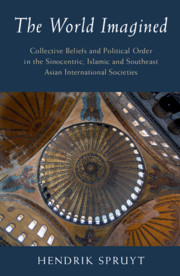 The World Imagined
The World Imagined Book contents
- The World Imagined
- LSE International Studies
- The World Imagined
- Copyright page
- Dedication
- Contents
- Figures
- Preface
- Acknowledgments
- A Note on Transliteration
- 1 Introduction
- Part I Beyond the Westphalian Gaze
- Part II The East Asian Sino-centric Order
- Part III The Islamic Cultural–Historical Community
- Part IV Collective Imagination among the Polities of Southeast Asia
- 8 The Galactic Polities of Southeast Asia
- 9 Interstate Relations and the Encounter with Colonial Powers
- 10 Conclusion
- Bibliography
- Index
9 - Interstate Relations and the Encounter with Colonial Powers
from Part IV - Collective Imagination among the Polities of Southeast Asia
Published online by Cambridge University Press: 18 June 2020
- The World Imagined
- LSE International Studies
- The World Imagined
- Copyright page
- Dedication
- Contents
- Figures
- Preface
- Acknowledgments
- A Note on Transliteration
- 1 Introduction
- Part I Beyond the Westphalian Gaze
- Part II The East Asian Sino-centric Order
- Part III The Islamic Cultural–Historical Community
- Part IV Collective Imagination among the Polities of Southeast Asia
- 8 The Galactic Polities of Southeast Asia
- 9 Interstate Relations and the Encounter with Colonial Powers
- 10 Conclusion
- Bibliography
- Index
Summary
Collective beliefs and the corresponding political organization influenced features of interstate relations such as the nature of warfare, alliance structure, and the absence of a hegemonic power. Except for Siam, the European colonial powers controlled every polity in Southeast Asia by the late nineteenth century. Siam adjusted to Western principles of political organization but did so against the backdrop of its existing belief system. Positivist international law nevertheless continued to exclude it from the Law of Nations, in a case similar to how the West treated the Islamic and East Asian polities.
Keywords
- Type
- Chapter
- Information
- The World ImaginedCollective Beliefs and Political Order in the Sinocentric, Islamic and Southeast Asian International Societies, pp. 284 - 325Publisher: Cambridge University PressPrint publication year: 2020
